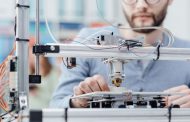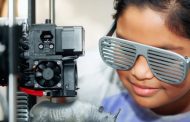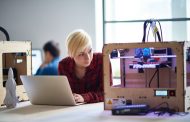From the New York Times’ Dennis Overbye: If you’ve been watching the HBO series “Westworld,” you might suspect 3-D printers are starting to do some amazing things. Recently, I journeyed to Brooklyn to watch a whole universe come out of a printer — our own universe, actually, when it was a baby at just 380,000 years old.
My guide was Janna Levin, a professor at Barnard College at Columbia and an award-winning author of books including, most recently, “Black Hole Blues,” about the discovery of gravitational waves.
Dr. Levin is also the director of scientific programs at Pioneer Works a cultural and art center with laboratories as well as studios in Red Hook, Brooklyn, home to the universe-maker. In the corner stood a robot snowman, a “snowbot,” giving hugs to any humans who ventured close.
To cook up her universe, Dr. Levin and her Pioneer Works colleagues used an algorithm devised by physicists at Imperial College in London. They call it Cosmic Sculpture.
The model is based on a map of the universe made recently by the Planck satellite, which shows the residual heat left over from the Big Bang itself in the form of microwave radio waves.
As it came out of the printer, the universe was about the size of a softball, all lumpy and splotchy with features only a mother could love. Over the eons the baby-verse would grow into the starry spectacle we now see when the sun goes down.
Microwave light, which fills all of space, was discovered by accident in 1965, Dr. Levin pointed out. But it had been predicted 20 years earlier, an inescapable part of Einstein’s theorizing.





